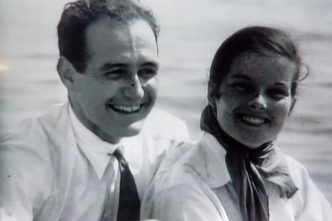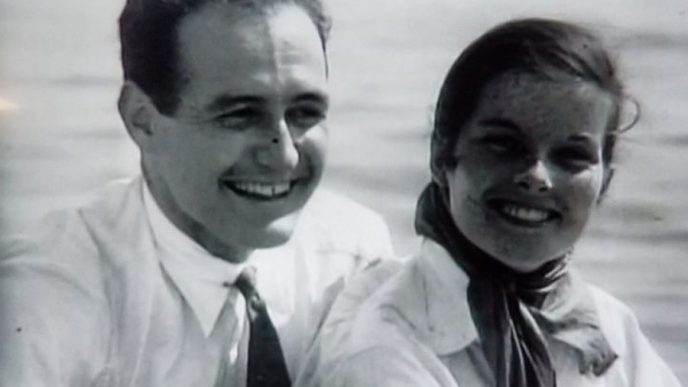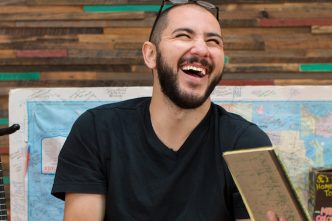Basic Information
| Field | Details |
|---|---|
| Full name | James Arthur “Jim” Williams |
| Born | December 11, 1930 — Gordon, Georgia |
| Died | January 14, 1990 — Savannah, Georgia |
| Occupations | Antiques dealer; historic preservationist; restorer |
| Known for | Restoring 50+ historic properties; owner of the Mercer (Mercer–Williams) House; central figure of Midnight in the Garden of Good and Evil; four criminal trials (1981–1989) ending in acquittal |
| Principal residence | Mercer (Mercer–Williams) House, Monterey Square, Savannah |
| Parents | Arthur Costlar Williams; Blanche Brooks Williams |
| Siblings | Dorothy “Ollie” Williams Kingery (1934–2023) |
| Education | Middle Georgia College (piano); Ringling College (interior design); Mercer University (attended) |
| Military service | U.S. Air Force (brief) |
| Years in Savannah | 1952–1990 |
| Personal relationship | Danny Hansford (companion and employee) |
From Gordon to Gaston Street: Early Years and Education
Jim Williams was born in the small central Georgia town of Gordon on December 11, 1930, the son of a barber, Arthur, and Blanche Brooks Williams. Music and design pulled him in equal measure: he studied piano at Middle Georgia College and interior design at Ringling College in Sarasota, later spending time at Mercer University. A brief stint in the U.S. Air Force gave way to a decisive move in 1952—Savannah, with its weathered squares and fading mansions, became his stage.
He arrived just as the city’s grand old bones needed new caretakers. By his early twenties he was buying, saving, and trading pieces of the past: furniture, paintings, and then entire buildings. The young dealer had a forager’s instinct and a designer’s eye, seeing value where others saw decay.
A Restorer’s Eye: Preservation, Properties, and Business
Over roughly 35 years, Williams restored more than 50 historic properties in Savannah and the Lowcountry. He moved quickly, assembling financing, craftsmen, and buyers, and he placed bold bets long before the renaissance of the Historic District felt inevitable. Among the most visible trophies of his vision was the stately Armstrong House, revived to its Beaux-Arts splendor. He also ranged beyond the city, reportedly acquiring Cabbage Island in 1968 for as little as $5,000 and later selling it for a sum near $900,000—an oft-cited example of his shrewd dealmaking.
His business had multiple engines: a high-end antiques trade, meticulous architectural restorations, and property repositioning. He operated showrooms, staged houses with museum-quality objects, and cultivated a clientele that trusted both his taste and the returns his projects could yield. Savannah’s old houses began to shine again, one by one, like lanterns along a foggy river.
Mercer House: Collections, Parties, and the Theater of Savannah Society
In 1969, Williams purchased the Mercer House on Monterey Square, an Italianate masterpiece whose construction began before the Civil War. He turned the residence into a vivid private museum: European paintings, American furniture, porcelain, carpets, and curiosities sat in precise tableaux under high ceilings and luminous chandeliers. The house itself became a character—the kind of place where a mere doorway framed scenes like paintings, and where a party was a pageant.
Christmas gatherings at Mercer House became legend: tuxedos, gowns, glittering crystal, and the hum of conversation—politicians, aristocrats-by-style, preservationists, and strays of every stripe. Williams moved through those rooms as host, dealer, and impresario, the ringmaster of Savannah’s most coveted salon.
The Hansford Shooting and Four Trials (1981–1989)
On May 2, 1981, Danny Hansford—Williams’s employee and sometime lover—was shot and killed in Mercer House. What followed was an extraordinary legal saga: four trials across the 1980s, two convictions later overturned on appeal, one hung jury, and finally, an acquittal in 1989. The case drew national attention not just for its high drama, but because it unfolded within the ornate rooms and tightly drawn circles of Savannah society.
Trial Sequence (Overview)
| Trial | Venue | Outcome |
|---|---|---|
| 1 | Savannah | Guilty; conviction later reversed on appeal |
| 2 | Savannah | Guilty; conviction later reversed on appeal |
| 3 | Savannah | Mistrial (hung jury) |
| 4 | Augusta | Not guilty (acquitted, 1989) |
The courtroom battles were relentless: arguments over self-defense, ballistics, character, and narrative. In the end, a jury outside Savannah said “not guilty.” The public would later come to the story through a bestselling book and a 1997 film, but in the 1980s it felt like a long, humid fever in a city not used to such sustained glare.
Family Ties: The Williams and Kingery Lines
Jim’s immediate family remained rooted in Georgia. His father, Arthur, cut hair and raised a son who would become a maestro of restoration; his mother, Blanche, outlived him, witnessing the transformation of her son’s adopted city. His closest public tie was to his younger sister, Dorothy “Ollie” Williams Kingery, who became the steward of Mercer House after his death. Dorothy’s own daughter, Dorothy Susan Kingery, would also be associated with the home’s management, keeping the family’s hands on the doorknob of the city’s most famous house.
Family Snapshot
| Relation | Name | Life dates | Notes |
|---|---|---|---|
| Father | Arthur Costlar Williams | — | Barber from Gordon, Georgia |
| Mother | Blanche Brooks Williams | 1907–1997 | Survived Jim by several years |
| Sister | Dorothy “Ollie” Williams Kingery | 1934–2023 | Inherited Mercer House; steward and public voice on the home |
| Niece | Dorothy Susan Kingery | — | Later associated with the house’s management |
| Companion | Danny Hansford | 1960–1981 | Employee and intimate partner; death triggered trials |
Families, like houses, tell stories through what they save. The Williams–Kingery line preserved not only a collection and a property, but the memory of a brother who shaped the city’s built environment as decisively as any architect of his era.
Final Year and Aftermath (1989–1990)
Acquitted in 1989, Williams did not have long to savor freedom from the courtroom. On January 14, 1990, at age 59, he died at his home in Mercer House—sudden, shocking, and widely reported as stemming from pneumonia and heart failure. Months earlier he had seemed poised to resume the old rhythms of the antiques trade and the social calendar, but time had other ideas.
His sister took up the stewardship of Mercer House, opening its doors to visitors and ensuring the rooms remained as he arranged them—sharp, luminous, and slightly theatrical. The 1994 publication of Midnight in the Garden of Good and Evil and the 1997 film adaptation vaulted the house and its former owner into the national imagination. Today, tens of thousands of visitors file past the etched-glass doors, looking for traces of a man whose taste and temperament still haunt the place like a familiar perfume.
The Continuing Allure
Williams’s imprint on Savannah runs along brick lines, wrought iron, and polished banisters. He was a businessman, yes—astute and sometimes audacious—but also a preservationist whose eye accelerated the city’s revival. When people speak of Savannah’s renaissance, they speak, knowingly or not, of his calculus: buy when others doubt, restore with rigor, and stage the outcome with unblinking style.
The enduring magnetism of Mercer House stems from this combination of beauty and friction. The house is a reliquary of art, a stage for high society, and the site of a tragedy—three storylines plaited together. In a city famous for its squares, Jim Williams drew one of his own inside those brick walls: art, commerce, family, and myth, intersecting in a perfect cross.
FAQ
Who was Jim Williams Savannah?
He was a Savannah antiques dealer and preservationist best known for restoring historic homes, owning the Mercer House, and being the central figure in Midnight in the Garden of Good and Evil.
What is the Mercer (Mercer–Williams) House?
It’s an Italianate mansion on Monterey Square that Williams bought in 1969, filled with art and antiques, and made into his residence and showplace.
How many properties did he restore?
Over his 35-year career in Savannah and the Lowcountry, he restored more than 50 properties.
What happened in the Danny Hansford case?
Hansford was shot and killed in Mercer House in 1981; after four trials, Williams was acquitted in 1989.
Was Jim Williams ever convicted?
He was convicted twice, but both convictions were overturned; a third trial ended in a hung jury, and a fourth brought acquittal.
Did he have a spouse or children?
No spouse or children are publicly recorded; his closest public family connection was his sister, Dorothy “Ollie” Williams Kingery.
Who inherited Mercer House?
His sister, Dorothy Kingery, became the steward of Mercer House after his death.
When did Jim Williams die, and of what?
He died on January 14, 1990, in Mercer House; reports cited pneumonia and heart failure.
Why is he linked to Midnight in the Garden of Good and Evil?
His life, house, and trials anchor the book’s narrative, which later became a 1997 film.
Can you visit Mercer House today?
Yes, the home operates as a museum, with tours that showcase Williams’s collection and interiors.














